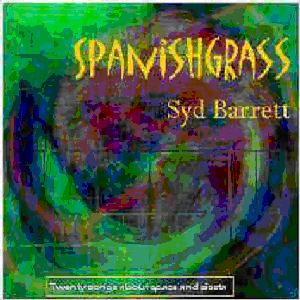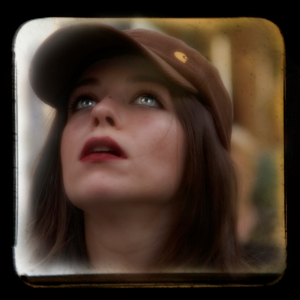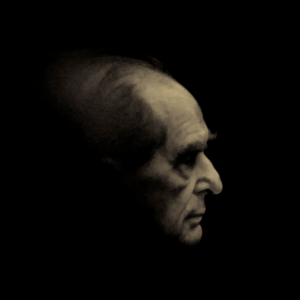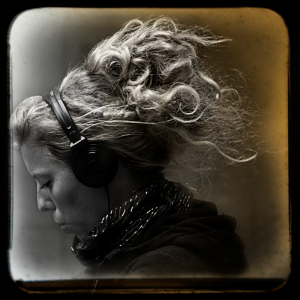2013-06-22
Spanishgrass, the hoax revealed...
Previously on Spanishgrass...

The Holy Church of Iggy the Inuit receives many letters from believers all over the world and on the 23rd of may 2012 at 04:31 AM (UTC+1) Babylemonade Aleph asked the following to the Reverend:
I have read that Syd made a trip to A Coruña, who was in a monastery, and recorded some songs that formed part of a recording entitled, "Spanishgrass, songs for the space and the nap". What you know about that, friend?
Frankly this didn't ring a bell, but the Church decided to look further into the matter. As the story of Syd Barrett recording a partly Galician album in a monastery in Spain seemed rather improbable an article was published in the satirical The Anchor division (Spanishgrass or Syd Barrett's lost Spanish record).
Normally this should have been it. But some dull boring people didn't like that the Holy Church, always in for a bit of controversy – we duly admit, had thrown a stone into the quiet Barrett-pond, where self-proclaimed fisher-kings have been angling for the same fish for the last four decades. One of them even found it necessary to comment as follows:
Wierdos (sic) come on here presenting this sort of stuff as FACT, fake pictures, stupid stories about Syd recording an album in a Spanish monastry (sic). All balls.
Just when the Reverend was going to go into zen-therapy to recover from that vicious blow help came from the Iberian peninsula in the form of Antonio Jesús from Solo En Las Nubes. Not only did he find back the original article that started the Syd In Oseira rumour (Spanishgrass, one year later), he also managed to interview the author of the article (Jose Ángel González, Spanishgrass & more).
Jose Ángel González reveals that there has been more than one Oseira article and that he also invented the Spanishgrass album:
A few years after the publication of the La Naval article I wrote an extended and corrected version for a series about hypothetical records. It was published on a blog that eventually ended and added the lyrics of some of the songs from Spanishgrass.
And so, without further ado, here it is... (for the original, Spanish version, please click on the image below)

Syd Barrett
"Spanish grass (twenty songs about space and siesta)"
Nonsense
music, 1978

Manantial (Spring) / Reverential mourners / Black maid / Plastic gunpowder / Mouse after a fête / Breakwater and tea / Grey trees / Two bangers + mash / Whining at the moon / Greenland / Eu son Dhaga (I am Dhaga) / Na outra banda (On the other hand) / Un poeta esquece os días de chuvia (A poet forgets the rainy days) / Saturnalia / William Phips / Stede Bonnet / Gabriel Spenser / Gospel at noon / Waste Deep / Frog
Before leaving the world to enclose himself at Hotel Schizophrenia, Syd Barrett (Cambridge, United Kingdom, 1948), the founder and evicted leader of Pink Floyd, traveled to Spain for two years (1976 and 1977). Suffering from dromomania, the same paranoid ambulatory psychosis Rimbaud and other chronically restless people endured, Barrett toured anonymously, using public transport or by hitchhiking, through Andalusia, Extremadura and Galicia. No one was with him and his luggage was scarce and revealing: a backpack, a Martin acoustic guitar and the complete works of the visionary William Blake.
During one of his wanderings he discovered what would become his private retreat, the Oseira monastery in the north-west of the Iberian Peninsula.
Nestled in a secluded canyon of the City of San Cristovo de Cea (Ourense), the Royal Monastery of Santa Maria de Oseira is the first establishment in Spain (twelfth century) of the Cistercian monastic order, founded as a radical alternative to the aristocratic congregation of Cluny. The Cistercians practice Christian friendship, revere poverty, adhere mythical culture and establish themselves remotely from the world, in places away from roads and population.
Caught by the sturdy charm of the place, the quiet floating of monastic life and the hospitality of the monks, he was at peace with himself, perhaps for the first time since the wicked years of psychedelia. Barrett stayed in one of the Oseiran guest cells for four months in 1976 (September-December) and for three months the following year (April to June) and only left the monastery to roam the nearby hills. He liked in particular two nearby sites: Loma Chaira, a wide panoramic grassy terrace situated nearly 1200 metres high, and Penedo de Cuncas, a ridge shaded by an abundant mass of chestnut trees.

During his stay the visitor wrote and recorded a dozen songs. He sat in the courtyard of the monastery, usually at the siesta time, and softly sung accompanied by his guitar, afraid to disturb the community. The sound of the recordings is technically bad, but from a poetic viewpoint very suggestive: Barrett's voice is hushed, like it would never be recorded in a studio, by the wind blowing and the effervescing water fountain. Perhaps this was the 'untanned arms' and forestry environment he vainly had tried to outline in his two solo works "The Madcap Laughs" (1970) and "Barrett" (1971). [Note: this seems to be a Spanish poetical description the Reverend frankly doesn't understand.]
Late 1978 twenty songs were released on vinyl by a bootleg record company in A Coruña, called Nonsense Music, using the unique tape recording made by Barrett and smuggled outside by a deserting Oseira novice. The album was titled "Spanishgrass" ("Hierba española") accompanied by the subtitle "twenty songs about space and siesta," a phrase the artist used when the monks asked him about the meaning of his songs.
"Spanishgrass" is currently unavailable. The first and only edition of the record - about 20 copies – wase not made for profit. All copies were given away by Gema Noya, the Nonsense Music manager, to her closest friends, under the promise that they would not distribute or duplicate the material, a pact that was fulfilled to the letter thanks to the loyalty of these good hippies. Noya used the record as a farewell gift before retiring to a Buddhist community at Pokhara (Nepal), where she still resides. According to sources close to her family, she burned the original tape and scattered the ashes on the beach of Carnota, close to the Pindo mountain, the Celtic Olympus, after she had sent a copy to Barrett, who lived in Cambridge since 1978.
The tracks on the secret record are musically blunt with guitar arrangements that are stripped of all artificiality, almost always orbicularly strumming a single chord, but the lyrics are, in contrast, very dense. They range from the usual surreal Barrett humour (Mouse after a fête, Two bangers & mash) to Pentecostal mysticism, with quotations from ancient Welsh bard songs taken from “The White Goddess", Robert Graves's work that the English musician consulted with interest at the Oseira library.
Also other books Barrett read at the monastery seized him deep in his mind. He dedicates three songs (William Phips, Stede Bonnet and Gabriel Spenser) to the flamboyant characters described by the extravagant Marcel Schwob in "Imaginary Lives". But above all, Barrett was seduced by the medieval-sounding poems "Herba aquí ou acolá" from the fabulist Alvaro Cunqueiro. He put music and sings three poems of the book in Galician (Eu are Dagha, Na outra banda and Un poeta esquece os días de chuvia).
© 2003 Jose Ángel González (parts of the above text have already been published in: Spanishgrass or Syd Barrett's lost Spanish record.
Lyrics

|
Black Maid |

|
Breakwater and tea |
|
Saturnalia |
|

|
Gospel at noon |
|
Plastic Gunpowder |
|
|
Grey trees |
© 2003 Jose Ángel González. Pictures courtesy of Jose Ángel González. Notes & Introduction : the Holy Church of Iggy the Inuit. Translation mistakes, typos and all possible errors are entirely the responsibility of the Holy Church of Iggy the Inuit.
Many thanks to Babylemonade Aleph for rolling the ball in the beginning
and Antonio Jesús for his incredible research. All pictures © Jose Ángel
González.
♥ Iggy ♥ Libby ♥
Jose Ángel González can be found at the following places:
Blog:
http://joseangelgonzalez.com/
Photography:
http://joseangelgonzalez.net/
Flickr:
http://www.flickr.com/photos/bichito/
Oraciones
Sucias: http://oracionessucias.tumblr.com/
Hot
Parade: http://hotparade.tumblr.com/
Canto
de Caza (2010): http://cantodecaza.wordpress.com/
Soy padre de un hoax (I am the father of a hoax)
The Anchor is the Holy Church of Iggy the Inuit's satirical
division, intended for people with a good heart, but a rather bad
character.
More info: The
Anchor.
Read our legal stuff: Legal
Stuff.

